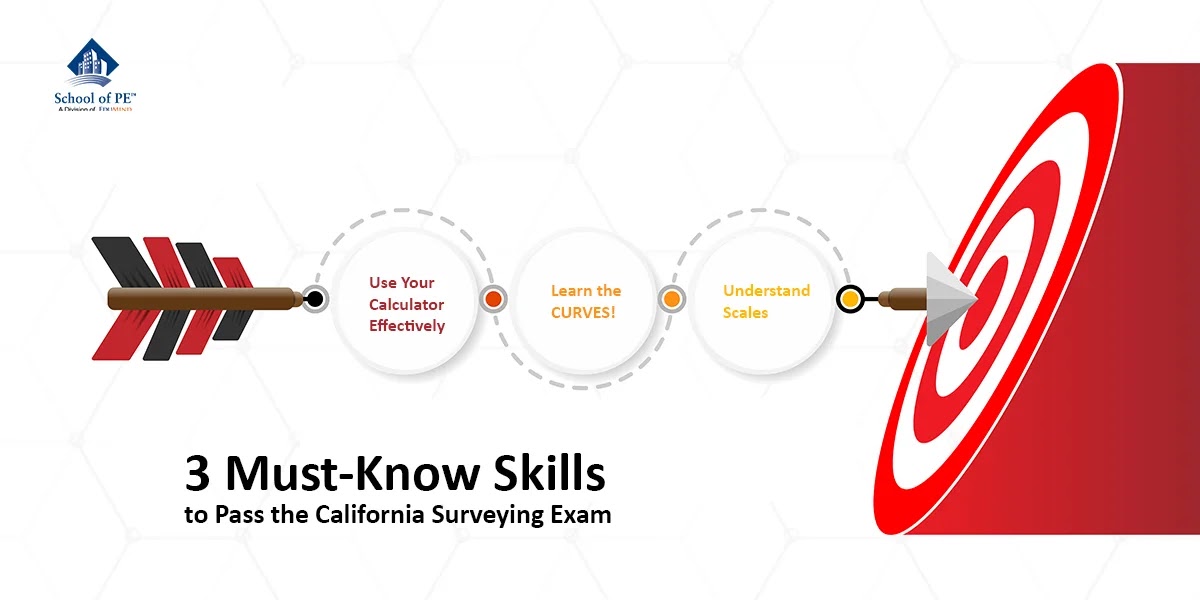Three Must-Know Skills to Pass the California Surveying Exam
Jul 20, 20201. How to MOST Effectively Use Your Calculator
This may not be the first thing that comes to mind when you think of "skills" needed to pass the California Surveying Exam (CSE), but trust me, using a graphing calculator is going to be absolutely crucial to your success. This is because the CSE is a test of not only knowledge but speed as well. You need to know the material well enough to recall it quickly, and you also need to have the calculator skills to avoid spending too much time on computation. The main thing the graphing calculator will help you with is converting from Degrees Minutes Seconds to a decimal form of degrees, so that you can plug that single value into the equations you'll be using. A normal calculator won't be able to help you do the conversion as quickly. Check the latest requirements on calculators to make sure your calculator is permitted and note that the requirements for this exam differ from other PE exams.
2. CURVES!
I've heard that horizontal and vertical curves can make up about 40-50% of the questions on the exam. Those values are empirical but, from my experience, I would say it's close. These concepts are very important to surveying, so get comfortable with them. Internalize the formulas, know how to recognize them, know all the tricks, and practice, practice, practice. I tend to tab my notes and books for these exams, and I tabbed the pages for vertical and horizontal curves in a different color than everything else so that I could find them quickly during the exam.

3. Understand Scales
Scale factors may seem like a straightforward concept, but they are a really easy way to gain or lose points on the exam. There are a lot of ways that the issue of scale can come up. I'll list some examples here:
If you want to show X feet of distance on a Y" sheet of paper, what scale should be used?
Which scale is larger 1" = 1 mile or 1/1000?
If the Scale Factor is X, and the measured distance is Y, what is the real distance?
The scale is 1:10, and what is the real area of a measured rectangle with side lengths of X and Y?
There's a lot packed into these four questions, and you should be familiar with each of these concepts. I would recommend practicing questions regarding scale and checking your answers after. You may be surprised by how often you get tripped up by not considering units, not considering length scales vs. area questions, or deciding between a "large" and "small" scale. It's worth spending time on this topic to make sure you never make a silly mistake.
Latest Blogs
Blogs by Year/ Month
Copied to clipboard



